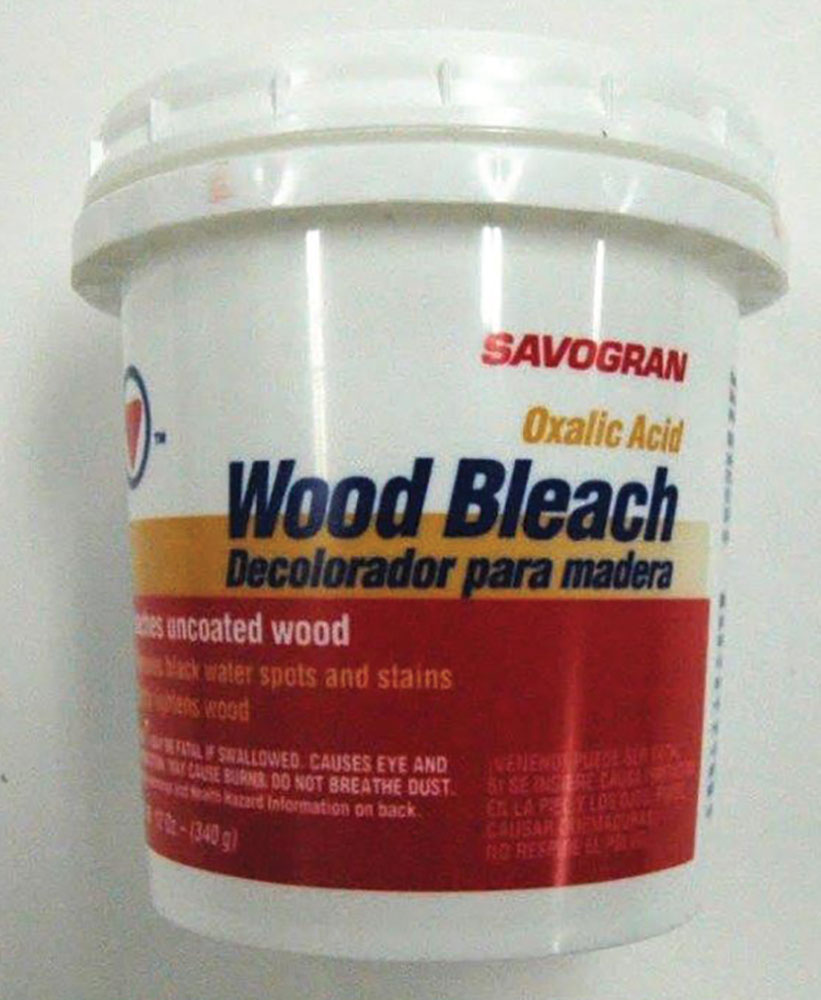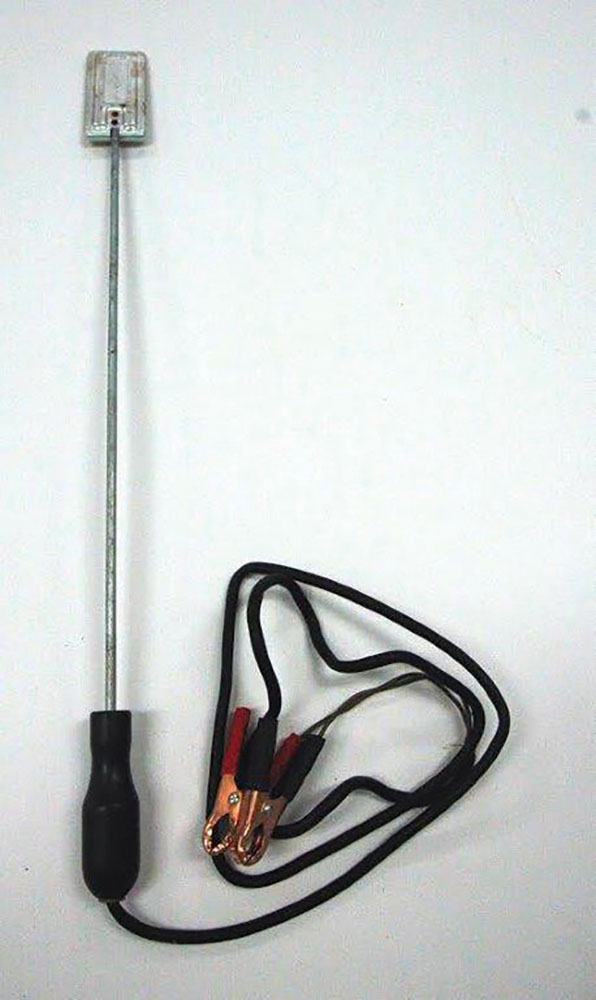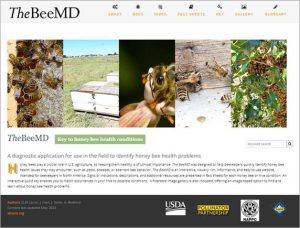by Jennifer Berry
Years ago, while still working on my graduate degree, I met Dr. Marion Ellis, a professor of Entomology at the University of Nebraska. I was still very “green” because it was my second year as a beekeeper. I am sure, as either newbies or seasoned beekeepers, that you remember what it was like when you first entered into the beekeeping fold. Do you recall your first hives? Do you remember your excitement at going to your first meetings or lectures, and the resulting 5,862 questions that you asked? There were the magazine articles you perused, the books you read (and re-read), and the catalogs you poured over. The contraptions pictured in the catalogs left me wondering, “What in the heck do you use that for?!?” Remember ordering your first equipment and trying to sound intelligent while doing so? “Yes, I would like a brood excluder please, and I need one drone and some of that comb frames with wired boards, I mean bars.” Do you remember the good ole days when you stumbled around the bee yard in awe of the activity level and slightly intimidated about interfering with their important comings and goings by opening the hives?
Well, that’s how I was when I met Dr. Ellis. He definitely has a special place in my old memory banks since, when we first met, he said to me, “Oh, we’ve met before because I recognize you.” I told him that this was not possible as I was new to the beekeeping world, academically and socially. But, throughout our two days working together at the Young Harris Bee Institute, he occasionally stopped me and repeated, “I know that we’ve met somewhere . . . maybe it was at a bee meeting?” “No,” I corrected him, “The only bee meeting I’ve attended so far has been the Georgia Beekeepers Association meeting in Macon, and I know for a fact that you weren’t there.” “Hmmmmm,” he pondered, “You just look so familiar to me. I could swear we’ve met somewhere before.”
The mystery continued until the end of the last day. While our crew was packing up and getting ready to leave, Dr. Ellis came over and said, “I just figured out where I have seen you. You used to be a comedian, right?” I shyly admitted that, in my previous life, I had tried my hand at comedy. He asked if I had ever performed in Chicago, with an improve team, and I confirmed, “Yes.” Then, he clapped his hands together and exclaimed, “That’s it! I saw you perform at a comedy club in Chicago.” Finally, the mystery had been solved – and none too soon. I was beginning to worry that I had an identical twin running around out there, from whom I had been unknowingly separated at birth, who I could soon be facing at any given moment if I continued to attend beekeeping events.
I was ecstatic that he actually had been at one of my shows and REMEMBERED me! We chatted about the show and how much fun he had. Meanwhile, I was constantly looking over my shoulder to see who might have been listening to all of this. Up until that point, I hadn’t really revealed much about my past to my new peers; I wasn’t sure how the academia of UGA would take it if they knew that, at one point, I had been an actor/comedian. But it’s all good now.
Once again, long story long, but there is a point – I promise. So, over the years, when I would run into Dr. Ellis at a meeting, we would tell whoever was around, or willing to listen, about how we had been introduced (though, not actually met) a long, long time ago. At one meeting, Dr. Ellis gave a lecture about the benefits of using oxalic acid for Varroa control, and I listened with great interest. At the end of the lecture, someone from the audience posed, “Where does one purchase this ‘oxalic acid?’” Dr. Ellis replied, “At your local hardware store. It’s wood bleach.” From the back of the room, I could hear some of the comments rising over the crowd, such as, “Wood bleach? Is he kidding us?!? I’m not putting wood bleach on my bees. It’ll kill them, for sure!!!”
I was right there with them, thinking to myself how horrible it would be for the bees. Afterward, I sat down with Dr. Ellis, and we chatted about the research that he and his graduate student Nicholas Aliano had conducted. They tested various application methods (drip and vapor) and treatment concentrations. Their results showed that oxalic was not harmful to the bees, but that it did do a number on the mites. Following that discussion, we tried it at the UGA bee lab, and we experienced the same outcome. Oxalic killed mites by the thousands! As a result, I started inquiring into getting oxalic acid registered for use as a miticide in the US, but quickly found out it was NOT going to be easy. It hadn’t been easy for the Canadians either.
Getting a pesticide approved takes a lot of time and money. It took six years from the time that the Canadian testing was completed for the registration process to move at a glacial pace through the proper channels. But, finally, the Canadian Honey Council officially registered oxalic acid in November 2010.
This brings to mind a conversation I had with Steve Forrest, former president and owner of Brushy Mountain Bee Farm, when he was trying to get Api Life Var (thymol) registered. Not only was there an incredible amount of legwork involved, but, like I mentioned previously, there’s also a huge amount of money required for testing, research, data analysis, labor, etc. Fortunately, the company that produces Api Life Var paid the costs and it was successful.
However, this was not the case for oxalic acid – a widely available, generic chemical. Think about it. Now, I’m just going to make up numbers here, but let’s say that it costs $500,000 to get a typical miticide registered by the EPA/USDA for use in bee hives. When a proprietary formula is invented, trademarks and intellectual property right protections can be obtained to secure such an investment to get the chemical approved and marketed. But who is going to put up big bucks to have a ubiquitous product approved for use in a bee hive when such an investor would have no control over its ultimate distribution, and, therefore, have no ability to recoup her/his investment? Today, anyone can stroll down to their nearest hardware store and purchase enough oxalic to treat 200+ colonies for just a few bucks.
In the mean time, the bees need our help. Varroa mites aren’t going away, and, without every safe and effective remedy at our disposal, our bees are suffering. The latest research suggests the economic threshold for Varroa is now three mites per 100 bees. In the old days, before the recently introduced viruses, small hive beetles, rising stresses from limited nutrition and growing toxin levels in the environment, upwards to 15 mites per 100 bees was considered tolerable.
So, in accordance with President Obama’s 2014 initiative on pollinator health, the EPA expedited the review on the registration process for oxalic acid. The EPA collaborated with the USDA and the Health Canada’s Pest Management Regulatory Agency to move as quickly as possible on the evaluation of oxalic acid. It takes years to research and evaluate product toxicity, exposure risks, environmental impact and transport-related issues along with effectiveness data. All of these concerns need to be addressed, analyzed and the resulting data deemed accurate and favorable before a product can be registered for safe use in the US. While these assurances are certainly good things, it just takes time – lots of time – which is why the president stepped in and said, “Ok, folks. Let’s figure out a way to speed up the process to get beneficial products to those who need them.” And that’s where Canada helped out. They had already completed the years of testing and, as part of the NAFTA “work share” agreement, they could share their data with the EPA risk assessors and managers to speed up the process; it saved years. We didn’t have to re-do all the same research. We built on what the Canadians had already accomplished. And, once all the data was reviewed, the conclusion was that oxalic acid should be registered for use in the U.S.
What is Oxalic acid? It’s an organic acid found just about everywhere in the environment including in plants and vegetables. It is bitter to the taste and irritating to the eyes, mouth and skin. It is a natural plant defense against herbivores. It is also found in honey. Since it is not fat soluble (a lipid), it doesn’t build up in wax comb. Back in 1957, it was registered as a pesticide (disinfectant/sanitizer), but, by 1994, the renewal of the product registration was cancelled.
There are risks involved if you plan to use oxalic acid. Given its caustic effect on the eyes, skin and respiratory system, it’s labeled with the highest degree of toxicity, “Category 1.” So, as with all pesticides, caution must be taken when handling it.
How can oxalic be applied? Oxalic can be applied several ways: drip (trickle), vaporization and spraying. It can be used on existing colonies, packages or swarms. The two most popular are the trickle and vaporization method. The trickle or solution method is taking the acid and mixing it with a warm 1:1 sugar-to-water solution. Next, the solution is drawn into a syringe and 5 ml is trickled (scientific term for “dribbly drop”) down the seam between each frame and directly onto the bees; the maximum dose is 50 ml per colony (5mls per seam). It doesn’t matter whether it is a nuc or a hive with a single or multiple brood chamber, but reduction in dosage for smaller colonies obviously.
The vaporizer method is only to be used on colonies outdoors. And, what ever you do, do not inhale the vapor! Basically, you use a vaporizer which is a metal wand with a plate at one end and a cord which connects to a battery at the other end. One gram of oxalic acid is placed on the metal plate. The plate is then slid into the entrance of the colony. The entrance opening and any other cracks and crevices are then sealed with the vaporizer in place to avoid the gas from escaping. Once connected to a battery, the heat from the plate causes the oxalic crystals to melt and turn into a gas (sublime). The vapor will permeate the hive. When it contacts the mites, it kills them. Each vaporizer is different. Some take only a few minutes to activate the acid, while others take a little longer. Since you don’t have to open the colony in order to treat, this seems to be the easier of the two methods to implement, especially on cold, rainy days.
You can also spray (mist) packages or swarms. Over the last few years, we’ve followed this protocol to ensure that we’re starting our research projects with mite-free bees. Once the packages arrived, we placed them in a cool, dark location in the lab for 24 hours to cluster the bees. Several hours prior to applying the oxalic solution, we spray the bees with a 1:1 sugar solution to fill their honey stomachs and reduce ingestion of the upcoming oxalic treatment. Next, we mix the oxalic acid in a 1:1 sugar water solution and evenly apply the solution to the bees.
Why use oxalic? It works. It has been used for years in Europe. According to numerous studies, it’s 90-99% effective at killing the mites with minimal damage to the bees and brood.
Does trickle or vaporization work better? A recent study at Sussex University examined the effectiveness of different doses and application methods on mite and bee mortality. The experiment involved 110 hives. The results showed sublimation (vaporization) was far better at reducing mite populations and showed no increase in bee mortality.
Is Oxalic perfect? No; it only works on phoretic mites, i.e., those mites crawling around on the frames or adult bees. The mites breeding under the cappings of the brood cells are unaffected by oxalic administrations, as well as most other miticide products. Therefore, applications are most effective when no brood is present. At beekeeping meetings, when chatting about this product to others, I’ve heard folks say that they are applying oxalic once-a-week for three weeks during the Summer months. This isn’t really advisable since it’s not very effective and can be detrimental to the bees. But there may be a way to still treat during the Summer months.
A few months ago, a group of commercial beekeepers came over from Italy to learn about small hive beetles. Apparently the beetles have crossed the border and are starting to be a problem there. During our discussion, we also talked about Varroa control and what beekeepers do in Italy. They said that they treated twice-a-year with oxalic acid vapor. They treat once in the Winter when colonies are naturally broodless, and once again in the late Summer after inducing an artificial state of broodlessness by caging their queens for 21 days. At first, I thought this was nuts, but, after we talked a bit more, it made sense.
The Italians explained that by August or September, the nectar flows are over and the colonies are about to start producing Winter bees. If mite populations are high, then the related virus loads that cause Winter mortality will be high, as well. Plus, by caging the queen, the foraging population (no longer needed) drops faster, and more colony resources (needed for Winter survival) are conserved. Why maintain a pipeline of replacement bees to sustain a large foraging force after the nectar flow is over? A hive full of bees eats regardless of whether or not there is work to be done. So, interrupting the brood cycle not only knocks down the mites (and the viruses vectored) prior to the Winter bees being reared, but reduces bee populations as well. Fewer mites equals improved health, and fewer bees equals less food consumed; both circumstances contribute directly to improved Winter survival. Yeah, I know that it is a bit of work to first cage and later release each queen, but think about the money and work it will save by Winter or next Spring!
Ok. So, now what? Brushy Mountain Bee Farm has been authorized by the EPA to be the sole distributer of oxalic acid for use as a miticide on honey bees. What does this mean? Well, in order for any application of oxalic (in beehives) to be legal, it must have the EPA approval label on it; Brushy is the only distributor registered to use the EPA label. It may seem silly, but it really is there for a reason. If you start searching the internet for oxalic acid application in bees, there’s a whole host of information out there on recipes for taking 100% oxalic acid down (wood bleach) to the 2 or 3% recommended application concentrations. Some advice may be sound, but other advice can be reckless and dangerous to you and your bees. Certainly, you don’t want to get hurt or inflict undue stress on your bees. The EPA label assures you of what you are receiving and gives you the applicable instructions to follow so that you can safely achieve the results desired without the risks of winging it after watching a YouTube video.
Be good to you and your bees.
See ya!
Jennifer Berry is the Research Leader at the University of Georgia Honey Bee Lab.









